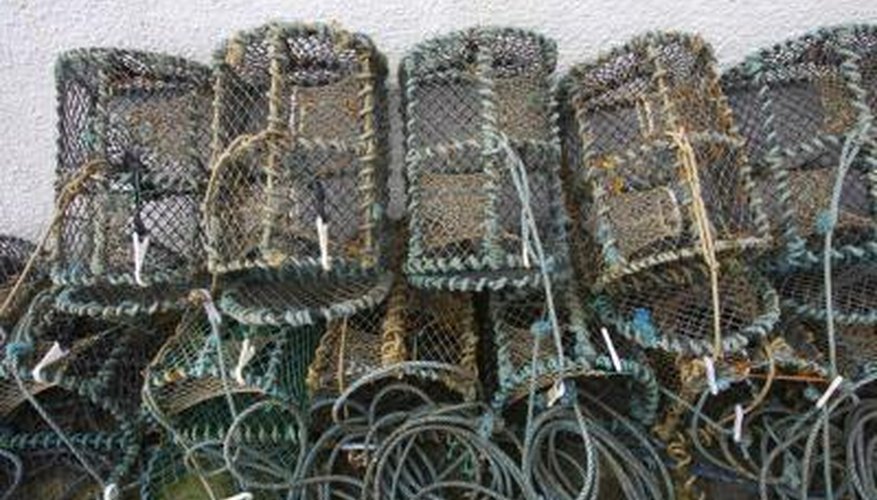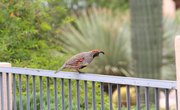
One of the best baits for large fish like catfish and bass is smaller fish like bluegill. Catching a large number of these smaller fish could take a long time with a pole and hook, not to mention the risk of damaging or killing the fish when removing the hook from its mouth. You can catch a large number of small fish live in a bluegill or live bait trap. Build your own trap out of wire mesh and a few other basic supplies.
Items you will need
hardware cloth , 1/2 inch mesh
wire cutters
floral wire
needle nose pliers
scissors
poster board
pencil
tape
bait
Step 1
Cut a rectangle of hardware cloth 40 inches wide and 80 inches long. For a larger trap, designed to catch fish large enough to eat rather than just catching bait, increase these measurements. Make the rectangle at least twice as long as it is tall.
Step 2

Christof Koepsel/Photodisc/Getty Images
Roll the rectangle into a tube. The resulting cylinder will have a 40-inch length and an 80-inch circumference.
Step 3
Overlap the mesh on the hardware cloth about two squares. That makes it easy to sew the two layers together so there is no gap where the fish can escape.
Step 4
Sew the overlapped hardware cloth together, securing the cylinder. Use floral wire. Sew with a whip stitch so that there is a loop around every square down the length of the hardware cloth. Use needle nose pliers to push the wire through the holes in the hardware cloth if you have trouble doing it by hand.
Step 5
Cut a half-circle out of poster board that has a radius of 40 inches and a length, across the flat side, of 80 inches. This will be your pattern for the two half circles that slide inside the tube to form the trap. Cut two half circles of hardware cloth based on the pattern.
Step 6
Wrap the pattern into a cone and stick it into the end of the hardware cloth cylinder with the point of the cone pointing in toward the center of the cylinder. Adjust the amount that the ends overlap so that the cone fits correctly, then shrink the wide end of the cone about ¼-inch and tape the cone in position.
Step 7
Wrap one of the hardware cloth half-circles around the cone pattern. When the ends overlap and the mesh cone fits snuggly over the paper cone, sew the overlapped sections together to secure the cone’s shape. Repeat this process for the second cone.
Step 8
Cut the pointed end of each cone off so that the opening in the end of the cone is slightly larger than the size fish you are trying to catch.
Step 9
Slide the wire mesh cones into each end of the cylinder so that the pointed end of the cone points in toward the center of the cylinder and the wide end of the cone is flush with the end of the cylinder.
Step 10
Sew the cylinder and cones together around the end, going through every hole in the hardware cloth so that there is no hole large enough to let the fish escape.
Step 11
Cut a 4-inch square out of the top of the cylinder, centered between the ends of the two cones. This is the opening through which you will dump trapped fish.
Step 12
Cut a 4 ½ inch square of hardware cloth to be the lid over the top of the opening you just cut. Lay the square over the opening and sew along the back side to attach the door over the hole like a flap.
Step 13
Hook the door closed, using three small metal hooks on the other three sides.
Step 14
Put bait in the center of the trap. Styrofoam broken into small pieces and dogfood both tend to attract bluegill.
References
- “North American Journal Of Fisheries Management Volume 20”; American Fisheries Society; 2000
- Fisheries and Aquaculture Department; “ How to Make Various Types of Traps and Pots”; 1998
Writer Bio
Misty Barton has been working in the fields of composition and journalism for over 10 years. She has a Bachelor of Science in English education and a Master of Arts in English and composition. She has written for various online publications including a blog that specifically addresses the concerns of work-at-home mothers.



